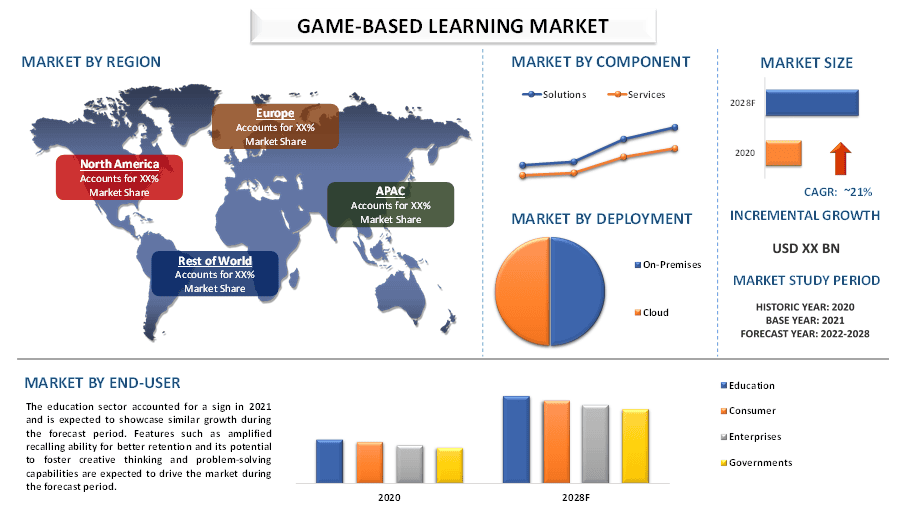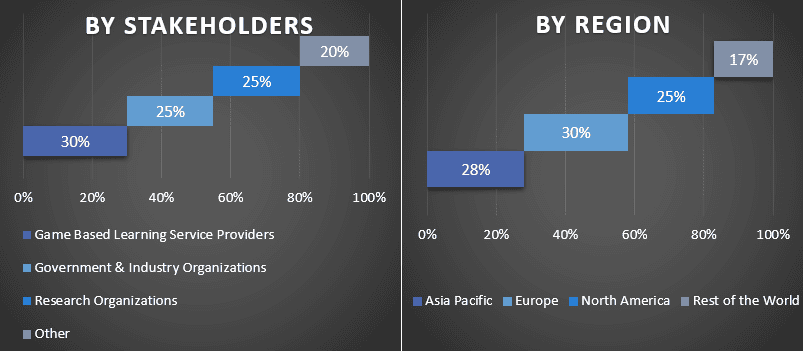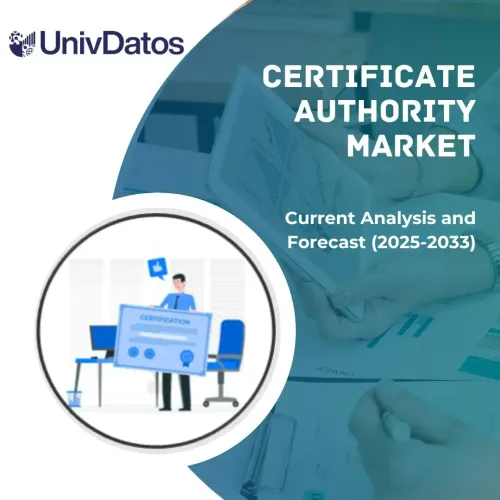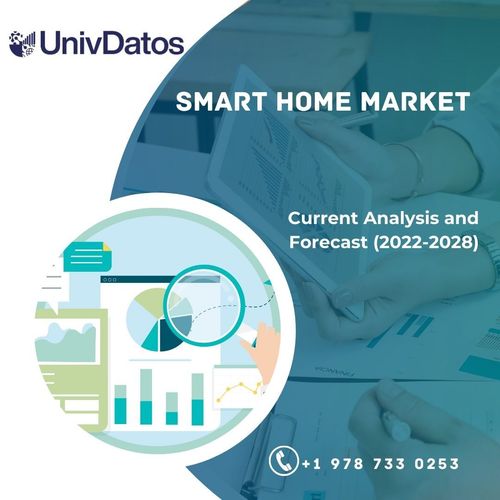- Home
- About Us
- Industry
- Services
- Reading
- Contact Us
Game Based Learning Market: Current Analysis and Forecast (2022-2028)
Emphasis on Component (Solutions and Services); Deployment (On-Premises and Deployment); End-User (Education, Consumer, Enterprises, and Governments) Region/Country.

Global Game-Based Learning Market is expected to grow at a significant rate of around 21% during the forecast period. Game based learning is a process of using educational games as a platform to teach students. Educational games are games that are specifically designed for educational purposes or have incidental or secondary educational value. The growing adoption of game-based learning is mainly attributed to the increasing demand for virtual reality and augmented reality and artificial intelligence. The game-based learning is growing on account of its features such as conformational feedback. Conformational feedback is intended to indicate the degree to which a response, action, or activity was correct or incorrect. Furthermore, the growing prominence of gaming industry is expected to influence the market growth. For instance, according to techdigest, the number of gaming apps in the Google Play Store jumped by 40% in a year and hit almost 480,000 in the first quarter of 2021. Moreover, companies are moving to cloud-based models to take advantage of new technologies such as microlearning, augmented learning, and virtual reality. Additionally, cloud-based technology is gaining momentum in the education sector due to its low-cost and flexible teaching methods for students.
Kahoot, Frontier Developments plc, Mojang Studios, BreakAway Games, Schell Games, Monkimun Inc, Smart Lumies Ltd, Cognitive ToyBox Inc, Paratus Knowledge Ventures Pvt Ltd, and Indusgeeks Solutions Pvt Ltd are some of the key players in the market. Several M&As along with partnerships have been undertaken by these players to facilitate customers with hi-tech and innovative products/technologies.
Insights Presented in the Report
“Amongst deployment, the cloud category to witness robust CAGR during the forecast period”
On the basis of deployment, the market is bifurcated into on-premises and cloud. The cloud segment is expected to grow with a significant CAGR during the forecast period. The growth of the cloud segment is mainly governed by factors, such as easy deployment, flexibility, and cost-effective pricing structure. Furthermore, the cloud enables project managers to synchronize and connect with multiple teams to get real-time information across the project sites. It has become the most preferred way to deploy learning games and is predicted to maintain its growth over the forecast period.
“Amongst end-user, the educational segment to hold a significant share in the market in 2020”
Based on end-user, the game-based learning market is classified into education, consumer enterprises, and governments. The education sector accounted for a significant share in 2020 and is expected to showcase similar growth during the forecast period. Features such as amplified recalling ability for better retention and its potential to foster creative thinking and problem-solving capabilities are expected to drive the market during the forecast period. Furthermore, the implementation of games enables healthy competition amongst students and simultaneously introduces them to goals and feedback.
“North America to hold a significant share in the market”
North America is expected to lead the game-based learning market in 2021 and is expected to retain its domination throughout the forecast period. The rapid adoption of game-based learning solutions in the region is attributed to the growing integration of superior technology such as AI, AR/VR, and cloud technology. Furthermore, the presence of developed economies in the region such as The United States and Canada have advanced connectivity, which gives their citizens access to uninterrupted network connectivity. In addition, the robust growth of the ICT sector in the region coupled with the presence of key players is expected to elevate the market during the forecast period. Reasons to buy this report:
- The study includes market sizing and forecasting analysis validated by authenticated key industry experts.
- The report presents a quick review of overall industry performance at one glance.
- The report covers an in-depth analysis of prominent industry peers with a primary focus on key business financials, product portfolio, expansion strategies, and recent developments.
- Detailed examination of drivers, restraints, key trends, and opportunities prevailing in the industry.
- The study comprehensively covers the market across different segments.
- Deep dive regional level analysis of the industry.
Customization Options:
The global Game-Based Learning market can further be customized as per the requirement or any other market segment. Besides this, UMI understands that you may have your own business needs, hence feel free to connect with us to get a report that completely suits your requirements.
Table of Content
Research Methodology for the Game-Based Learning Market Analysis (2022-2028)
Analyzing the historical market, estimating the current market, and forecasting the future market of the global game-based learning market were the three major steps undertaken to create and analyze the adoption of game-based learnings in major regions globally. Exhaustive secondary research was conducted to collect the historical market numbers and estimate the current market size. Secondly, to validate these insights, numerous findings and assumptions were taken into consideration. Moreover, exhaustive primary interviews were also conducted, with industry experts across the value chain of the global Game-Based Learning market. Post assumption and validation of market numbers through primary interviews, we employed a top-down/bottom-up approach to forecasting the complete market size. Thereafter, market breakdown and data triangulation methods were adopted to estimate and analyze the market size of segments and sub-segments of the industry pertains to. Detailed methodology is explained below:
Analysis of Historical Market Size
Step 1: In-Depth Study of Secondary Sources:
Detail secondary study was conducted to obtain the historical market size of the game-based learning market through company internal sources such as annual reports & financial statements, performance presentations, press releases, etc., and external sources including journals, news & articles, government publications, competitor publications, sector reports, third-party database, and other credible publications.
Step 2: Market Segmentation:
After obtaining the historical market size of the game-based learning market, we conducted a detailed secondary analysis to gather historical market insights and share for different segments & sub-segments for major regions. Major segments are included in the report as component, deployment, end-user. Further country-level analyses were conducted to evaluate the overall adoption of testing models in that region.
Step 3: Factor Analysis:
After acquiring the historical market size of different segments and sub-segments, we conducted a detailed factor analysis to estimate the current market size of the Game-Based Learning market. Further, we conducted factor analysis using dependent and independent variables such as component, deployment, end-user of game-based learnings. A thorough analysis was conducted for demand and supply-side scenarios considering top partnerships, mergers and acquisitions, business expansion, and product launches in the game-based learning market sector across the globe.
Current Market Size Estimate & Forecast
Current Market Sizing: Based on actionable insights from the above 3 steps, we arrived at the current market size, key players in the global game-based learning market, and market shares of the segments. All the required percentage shares split, and market breakdowns were determined using the above-mentioned secondary approach and were verified through primary interviews.
Estimation & Forecasting: For market estimation and forecast, weights were assigned to different factors including drivers & trends, restraints, and opportunities available for the stakeholders. After analyzing these factors, relevant forecasting techniques i.e., the top-down/bottom-up approach were applied to arrive at the market forecast for 2028 for different segments and sub-segments across the major markets globally. The research methodology adopted to estimate the market size encompasses:
- The industry’s market size, in terms of revenue (USD) and the adoption rate of the game-based learning market across the major markets domestically
- All percentage shares, splits, and breakdowns of market segments and sub-segments
- Key players in the global game-based learning market in terms of products offered. Also, the growth strategies adopted by these players to compete in the fast-growing market
Market Size and Share Validation
Primary Research: In-depth interviews were conducted with the Key Opinion Leaders (KOLs) including Top Level Executives (CXO/VPs, Sales Head, Marketing Head, Operational Head, Regional Head, Country Head, etc.) across major regions. Primary research findings were then summarized, and statistical analysis was performed to prove the stated hypothesis. Inputs from primary research were consolidated with secondary findings, hence turning information into actionable insights.
Split of Primary Participants in Different Regions

Market Engineering
The data triangulation technique was employed to complete the overall market estimation and to arrive at precise statistical numbers for each segment and sub-segment of the global game-based learning market. Data was split into several segments & sub-segments post studying various parameters and trends in the areas of component, deployment, end-user in the global game-based learning market.
The main objective of the Global Game-Based Learning Market Study
The current & future market trends of the global game-based learning market were pinpointed in the study. Investors can gain strategic insights to base their discretion for investments on the qualitative and quantitative analysis performed in the study. Current and future market trends determined the overall attractiveness of the market at a regional level, providing a platform for the industrial participant to exploit the untapped market to benefit from a first-mover advantage. Other quantitative goals of the studies include:
- Analyze the current and forecast market size of the game-based learning market in terms of value (USD). Also, analyze the current and forecast market size of different segments and sub-segments
- Segments in the study include areas of component, deployment, end-user.
- Define and analysis of the regulatory framework for the game-based learning
- Analyze the value chain involved with the presence of various intermediaries, along with analyzing customer and competitor behaviors of the industry.
- Analyze the current and forecast market size of the game-based learning market for the major region.
- Major countries of regions studied in the report include Asia Pacific, Europe, North America, and the Rest of the World.
- Company profiles of the Game-Based Learning market and the growth strategies adopted by the market players to sustain in the fast-growing market
- Deep dive regional level analysis of the industry
Related Reports
Customers who bought this item also bought










